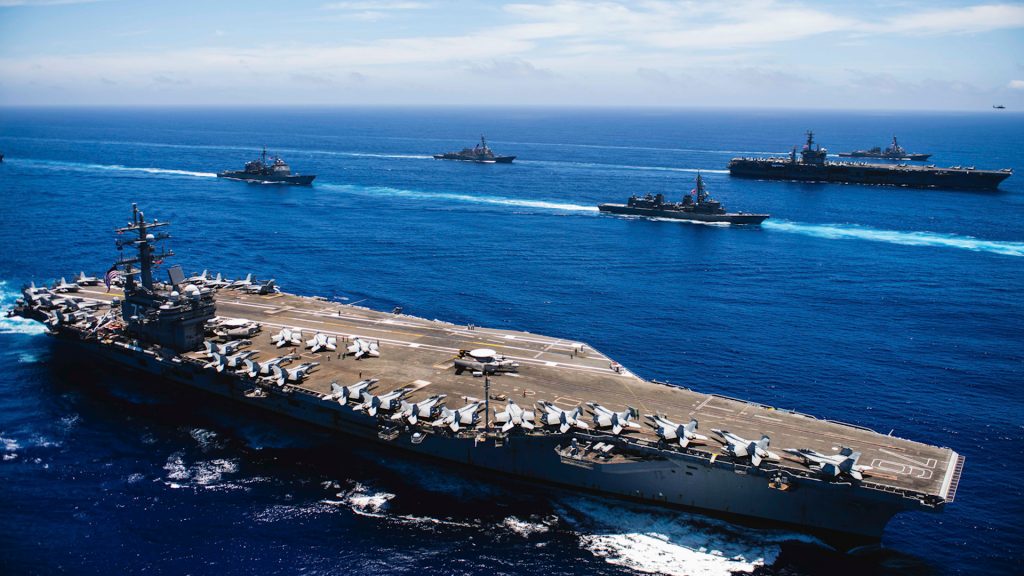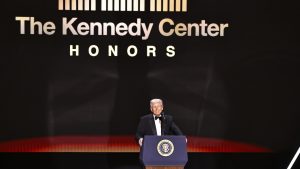China is upping its game in the Pacific. How are US forces preparing?

China is continuing to expand its military footprint and assert dominance in the South China Sea. Meanwhile, the U.S. Department of Defense has intensified efforts to counter Beijing’s influence and ensure freedom of navigation in the Pacific.
Over recent months, Straight Arrow News traveled to Aurora, Colorado; Washington, D.C.; and Tampa, Florida, to speak with leaders across the U.S. military. While each branch faces unique challenges, officials consistently identified China as a shared concern.
“There has never been a time when we have had to operate while being challenged in both strategic and operational domains,” said Lt. Gen. Stephen Sklenka, deputy commandant for installations and logistics with the Marine Corps. “We have always had unfettered access in the global commons. That will not be the case in the Indo-Pacific.”
China’s recent expansion
China’s People’s Liberation Army Navy has rapidly expanded in both size and capability. Estimates place its fleet at approximately 370 surface ships and submarines, supported by 384,000 personnel. Vice Adm. Blake Converse, deputy commander of the U.S. Pacific Fleet, said those figures reflect what he sees daily in the region.
“Thirty years ago, you could sail across the Pacific and rarely encounter a Chinese warship,” Converse said. “Today, on any given day, our common operating picture shows more than 100 Chinese vessels operating in Indo-Pacific waters.”
The vastness of the Pacific theater adds to the complexity. Vice Adm. Andrew Tiongson, commander of the U.S. Coast Guard Pacific Area, described his area of responsibility as spanning 74 million square miles and encompassing more than 70 nations.
“It stretches from polar bears to penguins, from Hollywood to Bollywood, and even to the east coast of Africa,” Tiongson said.
Learning lessons from experience
Military leaders are also drawing lessons from operations in the Middle East. Gen. Kevin Schneider, commander of the Pacific Air Forces, emphasized the importance of integrating capabilities across services.
“We are learning from base defense strategies and asking what each component brings to the fight,” Schneider said. “In the Indo-Pacific, the Air Force and Army will likely project power from similar locations. We need a command and control system that allows rapid integration of capabilities.”
Retired Gen. Charles Flynn, former commander of U.S. Army Pacific, echoed the need for joint force integration.
“We concede no domain in the Pacific,” Flynn said. “We cannot afford to lose in any of them. Land forces play a critical role in integrating air, maritime, space and cyber capabilities.”
The U.S. military maintains a force of approximately 350,000 personnel in the Pacific region, with major concentrations in Japan, South Korea, Guam and Hawaii. Brig. Gen. Anthony Mastalir, commander of U.S. Space Forces Indo-Pacific, highlighted the growing reliance on space-based operations.
“Space superiority must come first,” Mastalir said. “China is racing toward parity in every domain. The joint force depends on the Space Force more than ever to protect against space-enabled attacks.”
As China continues to build its naval power, U.S. military leaders emphasize the importance of unity among allied nations in maintaining peace and stability in the Pacific.
Access the full Weapons and Warfare episode here.
Access all Weapons and Warfare podcast episodes here.





